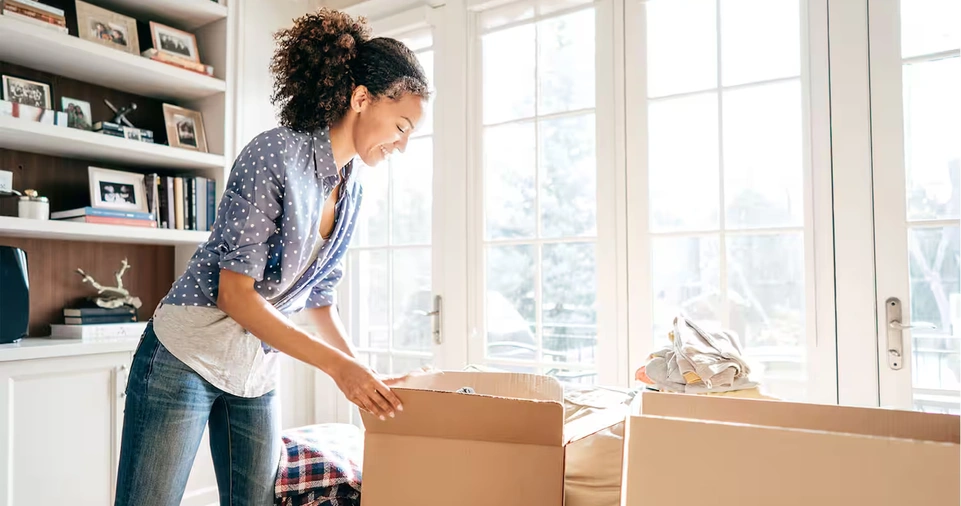Decluttering your home is an essential step in creating a more organized and functional living space.
It can improve mental clarity, increase productivity, and make your home more enjoyable to live in.
However, starting a home decluttering project can feel overwhelming without a clear plan. Whether you’re dealing with a few cluttered drawers or an entire house full of accumulated items, taking the right approach is crucial.
This guide provides a step-by-step method to help you get started, from setting realistic goals to maintaining a clutter-free home long-term.
Follow these practical tips, and you’ll soon have a clean, organized environment that supports a more balanced, stress-free lifestyle.
Why Decluttering Your Home Is Important
Before diving into the actual process of decluttering, it’s important to understand why it matters. Decluttering your home offers several benefits, including:
- Improved mental clarity: A cluttered home can contribute to stress and anxiety. Decluttering can create a more calming, serene environment, helping you think clearly.
- Enhanced productivity: With less clutter, you can focus more easily on tasks and spend less time searching for things.
- Better use of space: When you declutter, you free up valuable space in your home, making it more functional and comfortable.
- Increased home value: For those considering selling their homes, decluttering can make a space appear more inviting to potential buyers.
- Simplified cleaning: With fewer items around, cleaning becomes much quicker and more efficient.
Now that you understand the benefits of decluttering, let’s explore how to start the process.
ALSO READ: How to Practice Mindful Eating Daily?
Step 1: Set Clear Goals

Before beginning your home decluttering project, it’s essential to set clear, realistic goals. Without a plan, you may find yourself overwhelmed by the magnitude of the task. Here’s how to approach this step:
Define Your Why
Why do you want to declutter? Is it to simplify your life, make space for new items, or prepare for a move? Understanding your motivation will keep you motivated throughout the process.
Prioritize Areas
Start by identifying the areas of your home that need the most attention. Are there specific rooms or items that are contributing to the clutter? For instance, if your garage is overflowing with boxes, you may want to prioritize that area.
Create a Timeline
Decluttering can be a time-consuming task, so it’s helpful to set a realistic timeline. Break down the project into manageable chunks, such as decluttering one room or one category of items per week. Don’t try to do it all in one day, or you might get discouraged.
Step 2: Gather Necessary Supplies
Having the right tools at your disposal will help streamline the decluttering process. Here are some essential supplies you’ll need:
| Item | Purpose |
|---|---|
| Trash bags | For items that need to be thrown away |
| Boxes or bins | For sorting items to donate, sell, or store |
| Markers | To label boxes for organization |
| Cleaning supplies | To clean spaces as you declutter |
| Furniture movers or dollies | To move heavy items to new locations |
By having these supplies ready, you can quickly sort and organize as you work.
Step 3: Tackle One Room at a Time
It’s easy to get overwhelmed by the thought of decluttering your entire home, but the key is to take it one room at a time. Here’s how to efficiently declutter each room:
Start with a Small, Low-Stress Area
If you’re feeling intimidated, begin with a smaller, less cluttered room, such as a bathroom or a closet. Completing a small area first will give you a sense of accomplishment and motivate you to keep going.
Sort by Categories
As you begin decluttering, sort items into categories. For example, in your kitchen, you can divide items into groups such as utensils, dishware, and cleaning products. This approach helps you tackle the task in an organized way.
Declutter Items One by One
Go through each item in the room and ask yourself whether you truly need it. For example:
- Keep: Items you use regularly or have sentimental value.
- Donate: Items in good condition that you no longer need or use.
- Sell: Items that still have value and are worth selling.
- Trash: Broken, expired, or unusable items.
Use the “one-year rule”: if you haven’t used an item in the past year, it’s likely safe to let go of it.
Clean as You Go
Take advantage of the decluttering process to clean your space. Once you’ve removed unnecessary items, wipe down surfaces, vacuum floors, and refresh the room.
Step 4: Organize as You Declutter

As you declutter, it’s a great time to organize the remaining items. A good organization system ensures that your home stays clutter-free long after the decluttering project is finished. Here are some strategies to help:
Use Storage Bins and Labels
Group similar items together in clear storage bins and label each bin for easy identification. For example, if you’re decluttering your closet, use bins for scarves, hats, and shoes. Label the bins so you can quickly find what you need.
Maximize Vertical Space
To make the most of your space, consider using shelves, hooks, and wall-mounted organizers to store items off the floor. This is particularly helpful for small spaces.
Utilize Multi-Functional Furniture
Furniture that doubles as storage, such as ottomans with hidden compartments or coffee tables with storage, can help keep clutter at bay.
Don’t Overfill Cabinets or Drawers
Keep your cabinets and drawers organized by only storing the essentials and avoiding overfilling them. If a drawer or cabinet is difficult to close, it’s a sign that it’s time to declutter.
ALSO READ: How to Back Up Your Digital Files Safely?
Step 5: Develop New Habits to Prevent Future Clutter
Decluttering is a continuous process. Once your home is organized, it’s essential to adopt habits that prevent clutter from building up again. Here are a few strategies:
Implement a “One In, One Out” Rule
For every new item you bring into your home, make sure you get rid of something you no longer need. This will help keep your space from getting overwhelmed with unnecessary items.
Make Cleaning and Organizing a Regular Routine
Set aside a few minutes each day or week to tidy up and keep clutter in check. It’s easier to stay organized when you address small messes before they become big problems.
Be Mindful of New Purchases
Before buying new items, consider whether you truly need them. Ask yourself if the item will add value to your life or simply contribute to more clutter.
Step 6: Know When to Ask for Help
If your home is seriously cluttered or you feel overwhelmed, don’t hesitate to ask for help. You can hire a professional organizer, or you can enlist family members or friends to help with the task.
Sometimes, having an extra set of hands can speed up the process and give you the motivation to finish strong.
Step 7: Celebrate Your Success
Once your decluttering project is complete, take a moment to celebrate your accomplishment. Enjoy the clean, organized space you’ve worked hard to create.
You’ll find that decluttering can have a lasting impact on your life, helping you maintain an organized home and a clearer mindset.
Common Mistakes to Avoid

Even with a solid plan, it’s easy to make mistakes along the way. Here are some common pitfalls to watch out for:
Trying to Do Everything at Once
Don’t rush. Trying to declutter everything in one go can lead to burnout. Take it step by step.
Holding on to Items You “Might Need”
Letting go of things you don’t use can be difficult. Be realistic about what you truly need, and let go of items that don’t serve you.
Overcomplicating the Process
Keep it simple. Use basic organization systems that make sense for your lifestyle, and avoid overly complex solutions that are hard to maintain.
ALSO READ: How to Paint a Room Like a Pro?
Conclusion
A successful home decluttering project starts with clear goals, a systematic approach, and a commitment to staying organized in the long run.
By following the steps outlined in this guide, you can create a home that is not only clutter-free but also more functional, efficient, and peaceful. Take your time, stay patient, and enjoy the benefits of a decluttered space.







